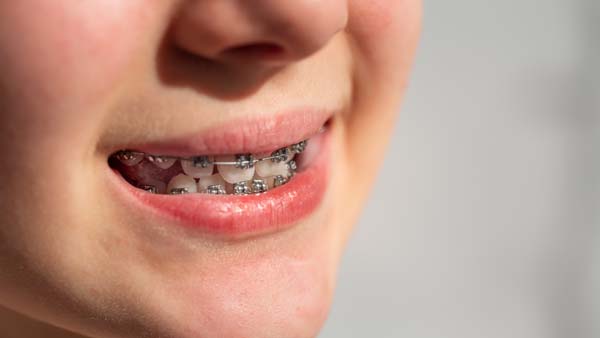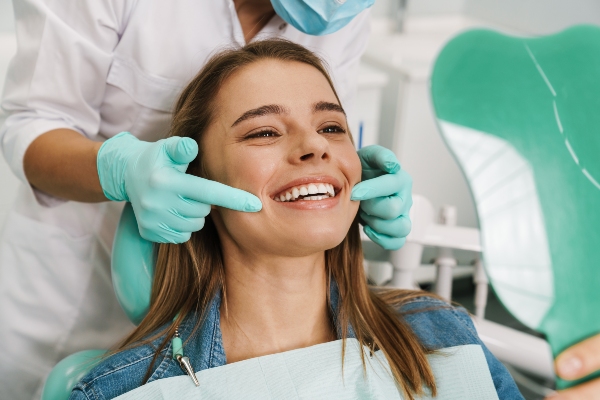A Parent’s Handbook to Braces for Kids

Braces for kids might be what your child needs to put their teeth alignment problems or bite issues behind them. Pediatric dentists have used braces to address orthodontic issues for centuries, and they are still one of the most commonly used teeth straightening devices.
Braces are dental devices that are used to improve teeth alignment. Historically, braces were usually made out of metal alloys, but they can also be made with tooth-colored or clear plastics these days. They work by gently pushing a person’s teeth to an improved alignment over a period of 12 to 36 months. Braces consist of brackets that are cemented to the patient’s teeth and wires that connect the brackets. Tightening these wires increases the force applied to the patient’s teeth.
Some of the issues braces for kids can be used to fix include:
- Spaces between teeth
- Crowded teeth
- Crooked teeth
- Misaligned teeth
- Underbites
- Overbites
Choosing the ideal braces for kids
Parents who are concerned their child might have any of the bite issues listed above should visit a pediatric dentist for an assessment. The dentist will visually inspect the child’s teeth and use diagnostic tests like X-rays to help determine appropriate treatments.
Even parents who do not think their children have any bite issues should bring them in for an evaluation before their seventh birthday. At this point, the child’s bite is defined enough to pinpoint issues and treat them. It is also easier to straighten a child’s teeth at this point since their jaw and other facial structures are still developing.
The four main types of braces parents get to choose from are:
1. Metal braces
These have been around for centuries and remain the most durable and effective type of braces. The main drawback of metal braces is their poor aesthetics. Many people do not like the visuals of having what looks like miniature railway tracks on their teeth.
Metal braces have evolved a lot over the years, and today’s devices are smaller and sleeker than the metal braces used decades ago. They can also be customized with any color, logo, or whatever else your child is into.
2. Ceramic braces
These devices are not as durable as metal braces, but they are less conspicuous. Instead of metal brackets and wires, these devices use tooth-colored ceramic brackets and transparent or tooth-colored wires. It makes the device a lot less noticeable during interactions, which many kids and adults prefer. However, some severe orthodontic issues that require lengthy treatments might require using metal braces.
3. Lingual braces
These are one of the least popular types of braces due to the discomfort they cause some patients, but they provide the best aesthetics. Lingual braces are quite similar to traditional braces, but instead of attaching the brackets and wires to the front of a patient’s teeth, they go on the back of their teeth.
4. Self-ligating braces
These braces are made with sliding doors that hold the wires of the device in place, removing the need for rubber bands like traditional braces. Self-ligating braces also come with less noticeable, smaller brackets. They are also generally viewed as the most comfortable type of braces.
Set your child up for a lifetime of good dental health
Poorly aligned teeth can lead to speech, bite, and developmental issues if left untreated. Call or visit our Madison clinic if your child’s teeth are poorly aligned to set up a consultation with our pediatric dentist.
Request an appointment here: http://rosecityorthodontics.com or call Rose City Orthodontics at (973) 245-9577 for an appointment in our Madison office.
Check out what others are saying about our dental services on Yelp: Orthodontics for Children in Madison, NJ.
Related Posts
It can become necessary to find an orthodontist quickly when a dental emergency occurs while on vacation. While this is a scenario that few vacationers anticipate, it is something anyone, especially families with teens, should prepare for while making vacation plans. There are also things that patients can do in advance to decrease the chances…
A confident and attractive smile can enhance self-esteem and the teeth's functionality. If you want to straighten your smile or correct misalignments, it is recommended to find an orthodontist. These dental professionals specialize in diagnosing, preventing, and treating teeth and jaw alignment issues, offering many solutions such as braces, clear aligners, and retainers. This blog…
When trying to find an orthodontist online, there are several factors to consider to conduct a thorough and successful search. No one should compromise on this task, as an orthodontist plays a major role in treating misaligned teeth and biting issues, which are beneficial to one’s overall oral health. Changing orthodontists down the road can…
There are several compelling reasons to find an orthodontist for fixing crooked, crowded, or misaligned teeth—and they are not all cosmetic. Yes, having a straight smile is attractive, but the benefits do not stop there. Here is a closer look at some key reasons to find an orthodontist for teeth straightening.Many dentists will offer teeth…


